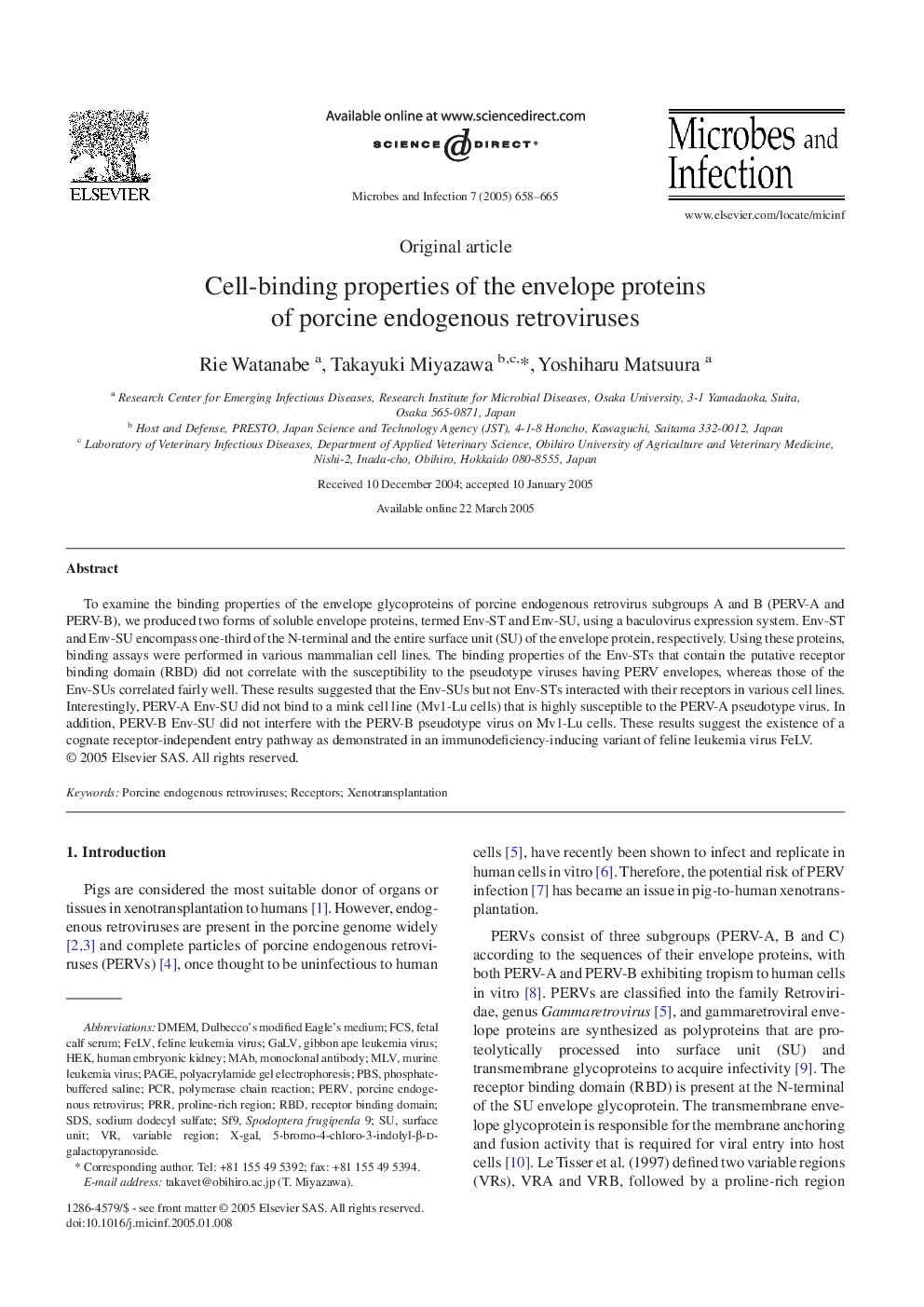| Article ID | Journal | Published Year | Pages | File Type |
|---|---|---|---|---|
| 9282942 | Microbes and Infection | 2005 | 8 Pages |
Abstract
To examine the binding properties of the envelope glycoproteins of porcine endogenous retrovirus subgroups A and B (PERV-A and PERV-B), we produced two forms of soluble envelope proteins, termed Env-ST and Env-SU, using a baculovirus expression system. Env-ST and Env-SU encompass one-third of the N-terminal and the entire surface unit (SU) of the envelope protein, respectively. Using these proteins, binding assays were performed in various mammalian cell lines. The binding properties of the Env-STs that contain the putative receptor binding domain (RBD) did not correlate with the susceptibility to the pseudotype viruses having PERV envelopes, whereas those of the Env-SUs correlated fairly well. These results suggested that the Env-SUs but not Env-STs interacted with their receptors in various cell lines. Interestingly, PERV-A Env-SU did not bind to a mink cell line (Mv1-Lu cells) that is highly susceptible to the PERV-A pseudotype virus. In addition, PERV-B Env-SU did not interfere with the PERV-B pseudotype virus on Mv1-Lu cells. These results suggest the existence of a cognate receptor-independent entry pathway as demonstrated in an immunodeficiency-inducing variant of feline leukemia virus FeLV.
Keywords
5-bromo-4-chloro-3-indolyl-β-d-galactopyranosideSf9MLVXenotransplantationPRRX-GalFCSPAGERBDFeLVHEKGaLVPERVgibbon ape leukemia virusmAbSDSDMEMPBSSpodoptera frugiperda 9Dulbecco's modified Eagle's mediumMonoclonal antibodypolyacrylamide gel electrophoresisReceptor binding domainPorcine endogenous retrovirusPorcine endogenous retrovirusessodium dodecyl sulfatefetal calf serumPhosphate-buffered salineproline-rich regionvariable regionsurface unitpolymerase chain reactionPCRFeline leukemia virusMurine leukemia virushuman embryonic kidneyReceptors
Related Topics
Life Sciences
Immunology and Microbiology
Immunology
Authors
Rie Watanabe, Takayuki Miyazawa, Yoshiharu Matsuura,
